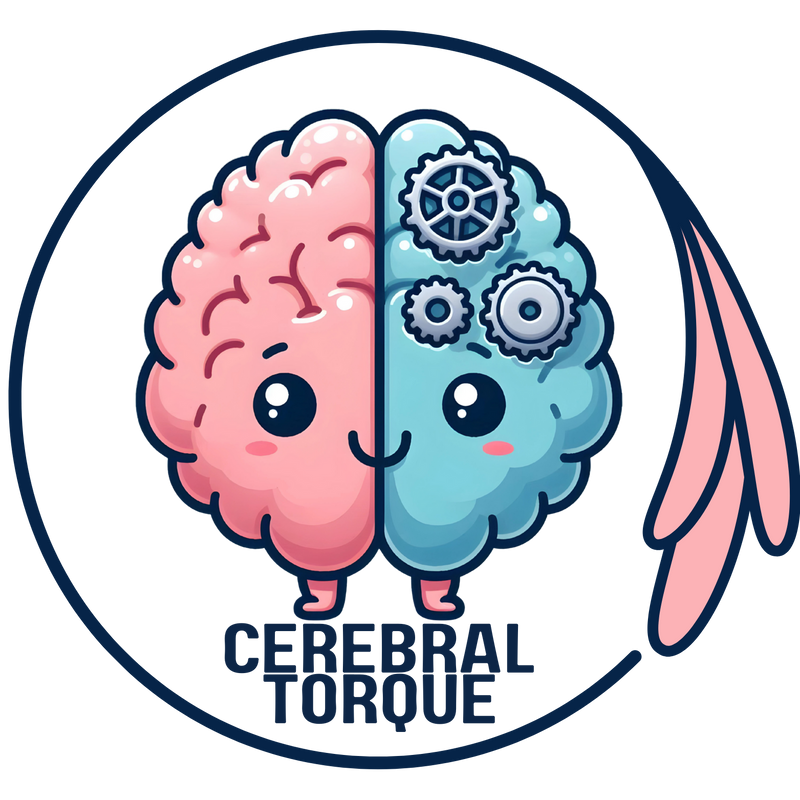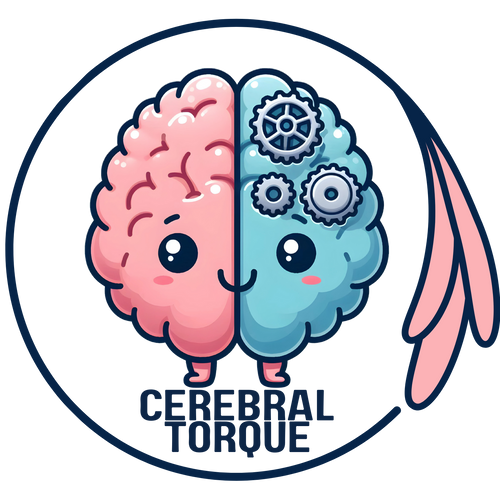Migraine and Depression: Shared Brain Mechanisms
Posted on July 11 2025,
Migraine and Depression: Shared Brain Mechanisms
Migraine and Depression Connection
If you gave migraine, you're significantly more likely to experience depression. If you have depression, your risk of developing migraine doubles. This isn't just coincidence. It's biology. A comprehensive new review reveals the ways these two conditions share common ground in your brain.
Beyond Coincidence
This research challenges the old assumption that depression in migraine patients is simply a psychological response to chronic pain. Instead, it reveals SHARED biological mechanisms operating at the deepest levels of brain function.
"The relationship between migraine and depression goes far beyond the stress of living with chronic pain. These conditions share fundamental biological pathways, from genetics to brain chemistry, that make them true comorbid partners rather than independent conditions." - Cerebral Torque
Why This Matters for Patients
Understanding these connections opens new doors for treatment. Healthcare providers can now target the shared mechanisms that drive both, potentially improving outcomes.
Key Research Insights
Bidirectional Relationship: Each condition increases the risk of developing the other
Shared Biology: Common genetic variants, neurotransmitter systems, and brain circuits
Treatment Overlap: Many medications effective for one condition also help the other
Gender Factor: Both conditions predominantly affect women, suggesting hormonal influences
DNA Links Between Both Conditions
Your genes don't determine your fate, but they do influence your susceptibility. Genome-wide studies have identified specific genetic variants that increase the risk of both migraine and depression, providing evidence that both conditions share biological roots.
Key Genetic Players
The ANKDD1B gene particularly stands out because it's highly expressed in microglia, brain immune cells that we now know play crucial roles in both migraine attacks and depressive episodes. Meanwhile, KCNK5 encodes a potassium channel that affects how brain cells communicate.
Shared Cellular Targets
Research has identified four main cell types where both conditions show similar genetic activity patterns: microglia (brain immune cells), astrocytes (brain support cells), neurons in the central nervous system, and pain-sensing neurons in the peripheral nervous system.
What This Means for Treatment
Precision Medicine Potential: Genetic testing could help predict which patients are at risk for both conditions
Targeted Therapies: Drugs could be designed to target the specific genes and proteins involved in both diseases
Early Intervention: Understanding genetic risk could lead to preventive strategies before symptoms develop
For Patients and Families
Family History Matters: If migraine or depression runs in your family, you may have increased risk for both
Not Destiny: Having genetic risk doesn't guarantee you'll develop either condition
Environmental Factors: Lifestyle, stress management, and early treatment can significantly impact outcomes
Shared Treatment Pathways
Medications and treatments that effectively target both migraine and depression, revealing shared biological mechanisms.
| Treatment Category | Specific Medications | How They Work | Clinical Benefits |
|---|---|---|---|
| Serotonin Modulators |
Triptans (acute)
|
Target 5-HT1B, 5-HT1D, and 5-HT1F receptors to reduce migraine symptoms and modulate mood pathways | Rapid migraine relief with mood-stabilizing effects |
| Antidepressants |
TCAs & SNRIs
|
Increase serotonin and norepinephrine by blocking reuptake transporters | Prevent migraines while treating depression symptoms |
| CGRP Therapies |
Monoclonal Antibodies
|
Block CGRP signaling, which is elevated in both migraine and depression | Reduce migraine frequency and improve mood symptoms |
| Novel Treatments |
Emerging Therapies
|
Target NMDA receptors, serotonin 5-HT2A receptors, or neuropeptide systems | Promising results for treatment-resistant cases of both conditions |
The Neurotransmitter Connection
Your brain relies on chemical messengers called neurotransmitters to function properly. In both migraine and depression, the same neurotransmitter systems become disrupted, explaining why treatments that restore this balance help both conditions.
Serotonin: The Master Regulator
Serotonin is perhaps the most important shared pathway. In migraine, serotonin levels drop before attacks, triggering the cascade that leads to head pain. In depression, serotonin dysfunction contributes to mood symptoms, sleep problems, and altered pain perception.
How Serotonin Connects Migraine and Depression
Serotonin controls blood vessel dilation in the brain, pain signal processing, mood regulation, and sleep cycles. When this system malfunctions, it can simultaneously trigger migraine attacks and depressive episodes.
Dopamine: Reward and Motivation
Dopamine dysfunction affects motivation and reward processing in depression while also playing a role in migraine pain sensitivity. Genetic variations in dopamine receptors increase risk for both conditions, and dopamine-targeted treatments show promise for both.
Norepinephrine: Stress and Alert Systems
This neurotransmitter manages your body's stress response and arousal levels. In both migraine and depression, norepinephrine systems become dysregulated, affecting sleep, attention, and pain sensitivity. Medications that modulate norepinephrine often help both conditions.
Treatment Implications
- Medications targeting multiple neurotransmitter systems may be more effective
- Lifestyle interventions that naturally boost serotonin (exercise, sunlight, social connection) can help both conditions
- Stress management becomes crucial since stress depletes these neurotransmitter systems
- Sleep regulation supports healthy neurotransmitter function
Shared Circuits of Pain and Mood
Brain imaging has found that migraine and depression involve overlapping brain networks. These circuits, which normally process pain, emotions, and sensory information, become hyperactive or disrupted in both conditions.
The Limbic System: Emotion and Pain Processing
The limbic system, including the amygdala and anterior cingulate cortex, processes both emotional experiences and pain signals. In people with migraine and depression, these areas show increased sensitivity to negative stimuli and enhanced connectivity that amplifies both pain and negative emotions.
Sensory Hypersensitivity
Both migraine and depression involve heightened sensitivity to sensory stimuli. People with migraine experience light and sound sensitivity during attacks, while those with depression often report increased sensitivity to various sensory inputs. This suggests shared dysfunction in sensory processing networks.
Clinical Significance
Therapy Targets: Treatments like transcranial magnetic stimulation (TMS) that target specific brain regions show effectiveness for both conditions
Symptom Management: Understanding shared hypersensitivity helps explain why environmental modifications (reducing light, noise) benefit both conditions, at least in the short-term when it comes to migraine
Early Detection: Changes in brain connectivity patterns might serve as early warning signs for both conditions
Stress and Environment
Research reveals how stress reshapes brain circuits and neurotransmitter systems in ways that promote both migraine attacks and depressive episodes.
Early Life Stress: Setting the Stage
Adverse childhood experiences create lasting changes in stress response systems that increase vulnerability to both migraine and depression in adulthood. These early experiences can alter how genes are expressed and how stress response systems develop.
The HPA Axis: Stress Response Gone Wrong
The hypothalamic-pituitary-adrenal (HPA) axis coordinates your body's stress response. In both migraine and depression, this system becomes dysregulated, leading to inappropriate cortisol release and heightened sensitivity to stressors.
How Chronic Stress Affects Both Conditions
Chronic stress depletes neurotransmitters, increases inflammation, disrupts sleep, and sensitizes pain pathways. This creates a vicious cycle where stress triggers migraine attacks and depression, which then increase stress sensitivity, making future episodes more likely.
Gender Differences in Stress Response
Women show stronger relationships between stress exposure and both migraine and depression. Hormonal fluctuations, particularly estrogen changes during menstrual cycles, pregnancy, and menopause, can amplify stress responses and trigger both conditions.
Stress Management Strategies
- Regular exercise to naturally regulate neurotransmitter systems
- Mindfulness and meditation practices to reduce stress reactivity
- Sleep hygiene to support healthy stress hormone cycles
- Social support networks to buffer stress effects
- Professional therapy to address trauma and develop coping skills
Clinical Implications and Future Directions
How understanding shared mechanisms between migraine and depression is transforming patient care and opening new treatment possibilities.
| Clinical Area | Current Approach | Evidence-Based Innovation | Patient Benefits |
|---|---|---|---|
| Diagnosis | Treat conditions separately, often miss comorbidity |
Integrated Screening
|
Earlier detection and more comprehensive care |
| Treatment Selection | Trial-and-error medication approach |
Mechanism-Based Prescribing
|
Faster response times, fewer medication trials |
| Lifestyle Management | Condition-specific recommendations |
Integrated Lifestyle Approach
|
More effective self-management strategies |
| Research Directions | Study conditions in isolation |
Comorbidity-Focused Research
|
Future personalized treatments based on individual biology |
The Path Forward
By recognizing these conditions with shared biological foundations, healthcare providers can develop more effective, personalized treatment approaches.
Immediate Applications
For Healthcare Providers
Screening Protocols: Routinely assess for both conditions when either is present
Treatment Selection: Consider medications and therapies effective for both conditions as first-line options
Patient Education: Help patients understand the biological connection between their symptoms
Holistic Care: Address shared risk factors like stress, sleep, and lifestyle factors
For Patients and Families
Validation: Your symptoms are based in real, measurable biological changes
Comprehensive Care: Seek providers who understand the connection between migraine and depression
Self-Advocacy: Share this research with your healthcare team to ensure comprehensive evaluation
Hope: Understanding shared mechanisms opens doors to more effective treatments
This article is for educational purposes based on published research. The information provided should not replace professional medical advice. If you experience migraine or depression symptoms, consult with qualified healthcare providers for proper evaluation and treatment. Individual responses to treatments can vary significantly.
Mon, Aug 04, 25
Evidence-Based Guide to Migraine Nutraceuticals and Herbal Options
Evidence-based guide to natural migraine treatments including riboflavin, magnesium, ginger, and CoQ10. Compare effectiveness, dosing, and safety of 15+ nutraceuticals and herbal remedies for migraine prevention and acute treatment with...
Read MoreMon, Jul 28, 25
Status Migrainosus Guide: A migraine attack lasting 72 hours or more
Status migrainosus is a severe migraine complication lasting over 72 hours requiring emergency treatment. Learn evidence-based management strategies, IV therapy protocols, diagnostic criteria, and prognosis from this comprehensive clinical guide...
Read MoreFri, Jul 25, 25
Understanding Cutaneous Allodynia in Migraine
Learn about skin hypersensitivity affecting 63% of migraine patients, validated assessment tools, suicide risks, and how allodynia predicts treatment response. Evidence-based insights from major population studies including AMPP and MAST...
Read More


